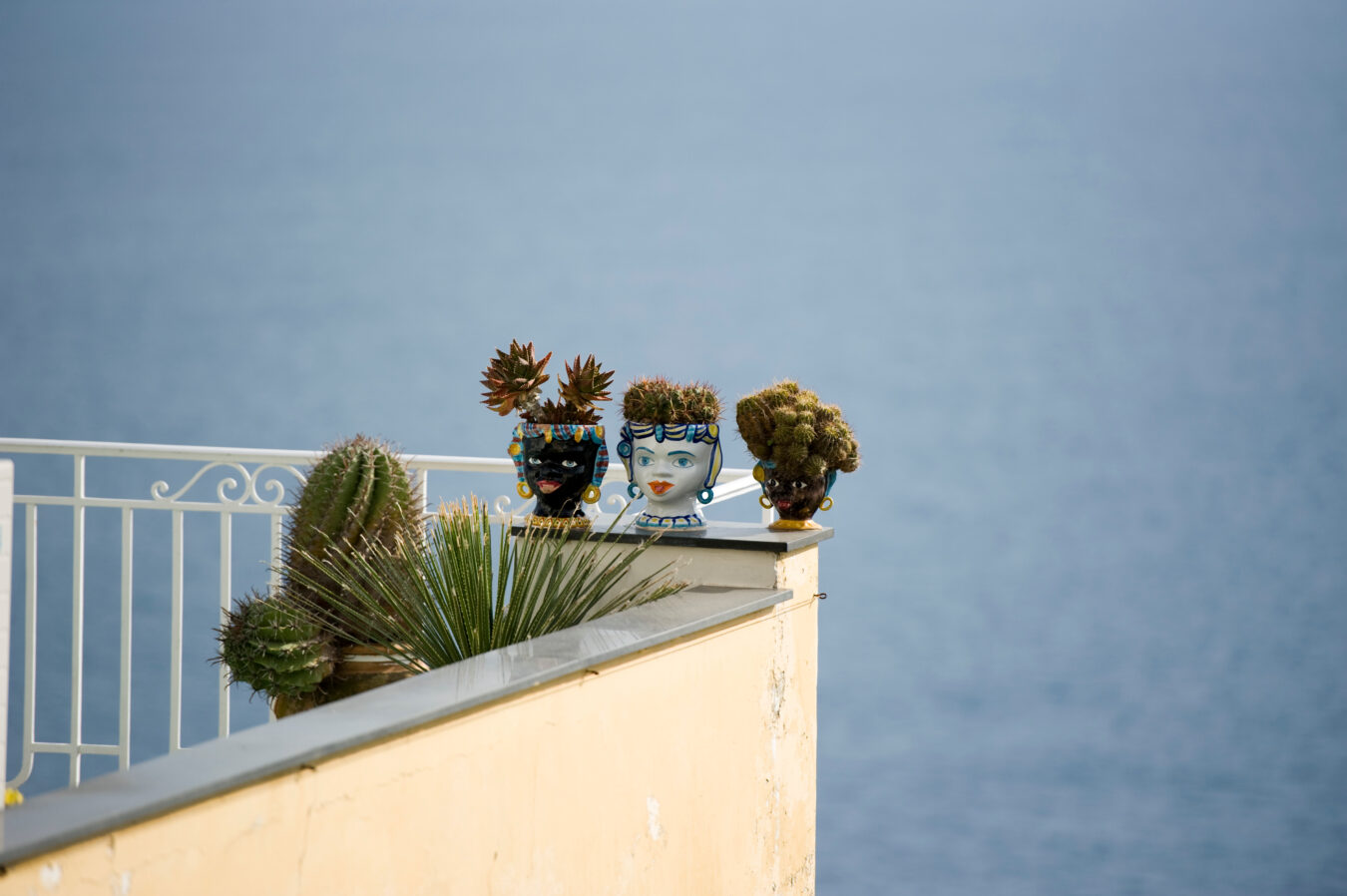Moor’s Heads (Testa di Moro) are ceramic masterpieces from Sicily: ceramic heads shaped like a Moor and a Sicilian girl, born of a legend from over a thousand years ago set in Palermo’s Arab quarter. These beautiful vases, often painted colorfully, crowned with citrus fruits or flowers, used to plant basil, are symbols of passion, betrayal, noble origins, and Sicilian tradition.
Today many artisans in Caltagirone, Santo Stefano di Camastra, and Palermo still make them, and they are prized for art and emotion as much as form. For this reason, they remain one of the most recognisable emblems of the island today.
What are Testa di Moro and where are they seen in Sicily today?
Testa di Moro, meaning “Moor’s Heads,” are decorative ceramic heads, usually made in pairs, one male (the Moor) and one female. They’re often used as planters, basil is traditional, but also as statement ceramic art on balconies, terraces, or in artisan shops. Their presence is strong in the Arab quarter of Palermo, in cities like Caltagirone known for ceramics, and in homes that honor traditional Sicilian culture and style.
What is the legend behind Testa di Moro: love story, cruelty, and tradition?
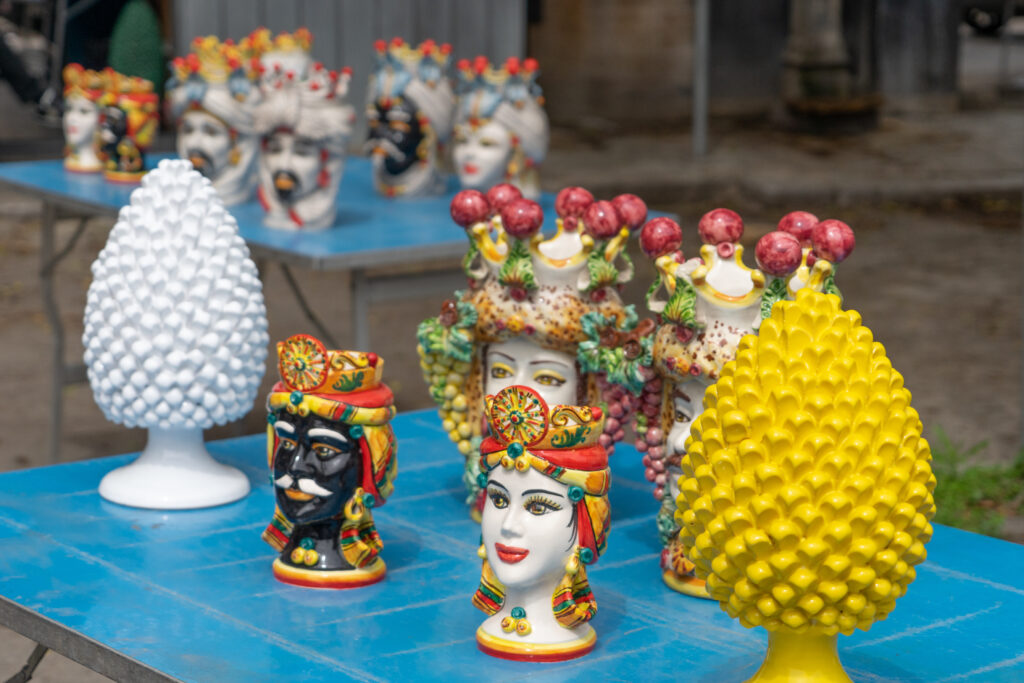
The legend begins in the Arab quarter of Palermo, many centuries ago (11th century context). A beautiful girl fell deeply in love with a Moor at first sight. He was handsome, exotic, someone of noble origins, but he hid that he had a wife and children.
When she discovered the betrayal, her pain turned to rage. In an act of cruelty she killed him, cut off his head, and used it as a vase on her balcony, planting basil in it. Her tears and the growth of the basil inspired neighbours to create similar head-shaped vases. From passion and jealousy came a tradition of beautiful art.
Why do Moor’s Heads matter in Sicilian culture?
Moor’s Heads give texture to Sicily’s identity. They are not just pots, they are storytelling vessels. Each one stands for emotions: love, betrayal, jealousy, beauty, and remembrance. They reflect Arab, Norman, and other layers of Sicily’s history. They connect the past to present, artists to families, stories to balconies.
The tradition is alive: in artisan workshops, in the way people care for plants in those vases, in the variety of styles, from classic crowned heads to modern reinterpretations, using citrus fruit motifs, flowers, bright glazes. They show up in art markets, garden decor, and often as centerpieces in luxury spaces.
What is the history and technique of Sicilian ceramic Moor’s Heads?
The tradition is firmly rooted in Sicilian ceramic art, especially in places like Caltagirone and Santo Stefano di Camastra, where the craft of ceramics is long established. Testa di Moro is a decorated ceramic vase featuring human faces typical of Sicilian tradition.
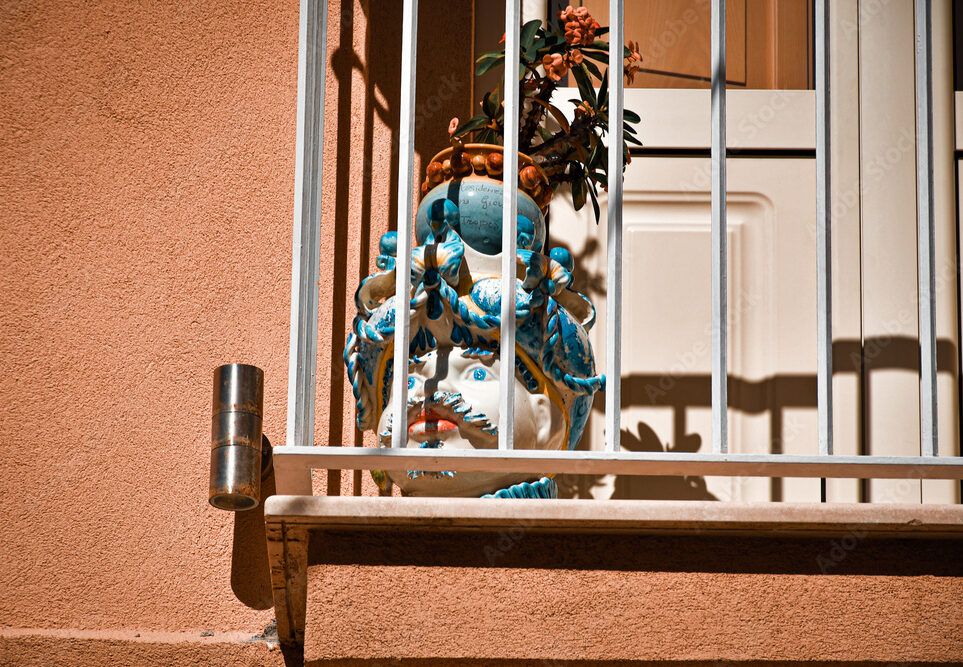
The techniques include shaping clay by hand, forming the head (man or woman), adding features like crowns, facial details, painting with vivid colors, glazing, then firing in kilns. The motifs often include citrus fruits, flowers, elaborate crowns, reflecting the “Moorish” aesthetics and local flora.
How are Moor’s Heads appreciated and collected today?
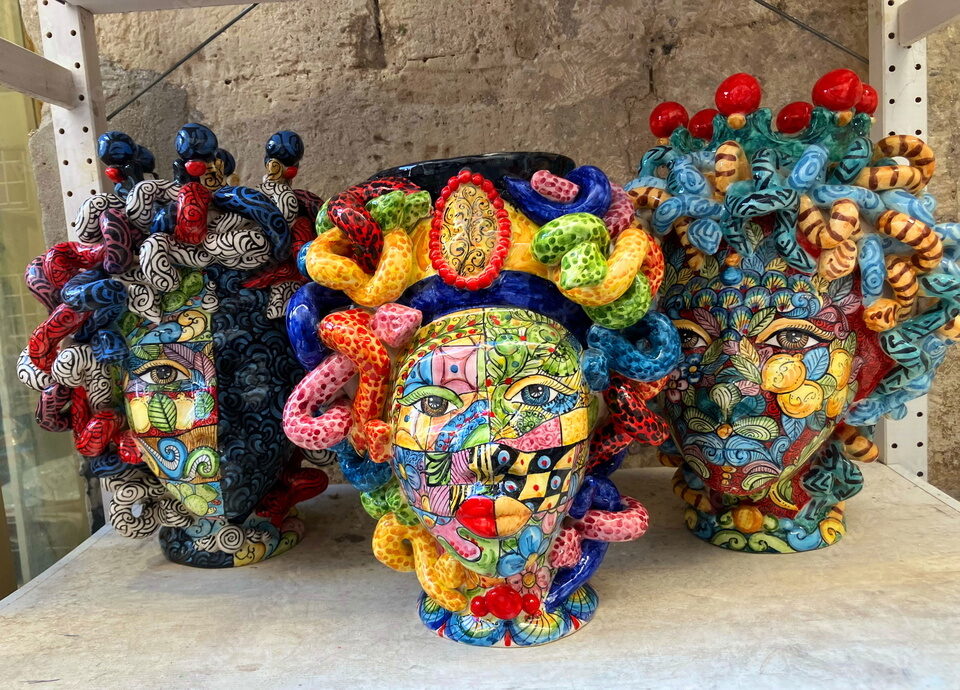
You don’t need to travel to see them, they are everywhere. In artisan shops, in Palermo’s streets, displayed on terraces with basil or other plants, hanging in galleries, shown in specialist ceramic studios. Many travellers try workshops to paint or create their own pieces.
They are collected both as decorative art and as cultural heritage. You’ll see lovers of art and culture buying them, placing them as focal pieces in villa interiors or exteriors.
What are the best practices for experiencing Moor’s Heads tradition?
Visit Caltagirone
It’s a hub of ceramic art, rich in workshops making traditional Testa di Moro.
Explore Palermo’s Arab quarter (Kalsa)
The legends claim that this is where the tale began. Attend a ceramic workshop or lab, where you can see artisans at work or even paint your own Testa di Moro.
Respect authenticity
Buy from makers who use traditional materials and methods.
Understand the tale
Knowing the love affair, jealousy, betrayal behind them gives each vase more weight.
Featured Villas: Casa Zammù and Villa Calipso
Casa Zammù
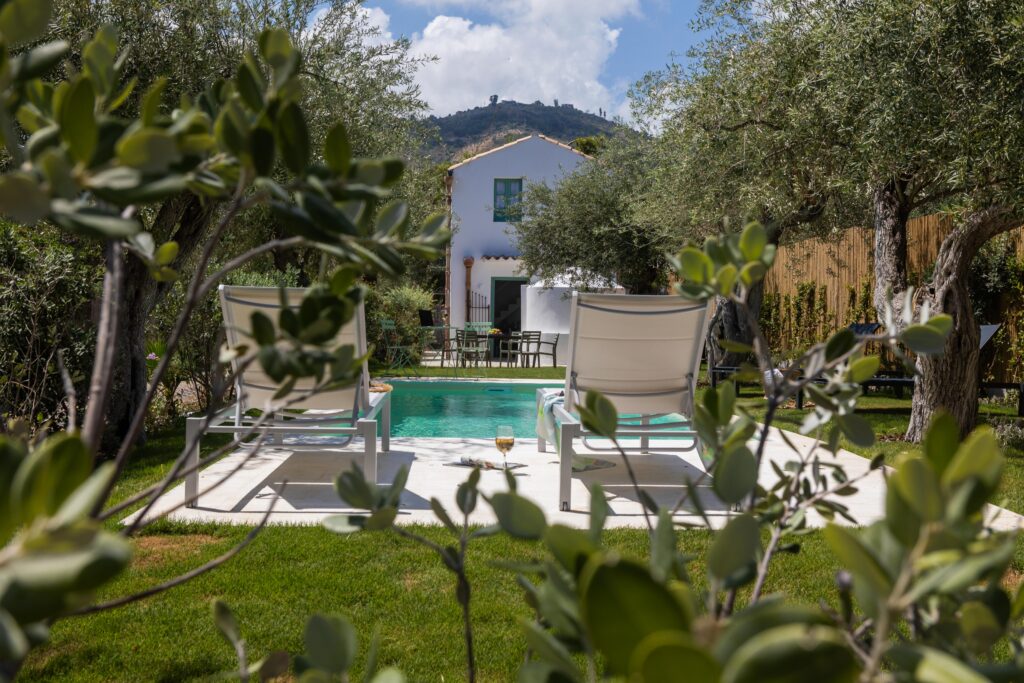
Casa Zammù is a beautifully restored country house in Cefalù, nestled among olive trees. It offers a private pool and is arranged over two floors. It can accommodate 4 guests (or up to 6 with extra beds). Rustic charm meets comfort, with careful attention to detail and authentic Sicilian style. The villa’s outdoor spaces are ideal for displaying art, plants, or even Moor’s Heads, and for enjoying moments of tranquility after exploring culture in Palermo or Caltagirone.
Villa Calipso

Villa Calipso in Solanto-Santa Flavia, just 20 km east of Palermo, is a seaside villa with striking terrace space right above the sea. Decorated with taste and warmth, with large sun terraces, covered “al fresco” dining areas, and elegant lounges. It’s close enough to Palermo to explore artisan shops, galleries, and traditions of Moor’s Heads, yet private and stylish, letting you live the Sicilian ceramic tradition from your own terrace.
Why book your holiday with Sicily4u for exploring Testa di Moro tradition?
If you want to experience Sicilian culture deeply, the ceramic art of Moor’s Heads, and the stories behind them, having a villa that offers both comfort and proximity to artistic centers matters. With Sicily4u, you can base yourself in villas like Casa Zammù or Villa Calipso, luxury spaces where art, tradition, and lifestyle meet.
You get a home with elegant style, terraces and gardens where Moor’s Heads look magnificent, comfort that lets you rest after cultural days, and guidance from a team that understands the importance of tradition. We can point you toward artisans, ceramic studios, and places where you see the making of Testa di Moro live.
Why is Testa di Moro a tradition you should not miss in Sicily?
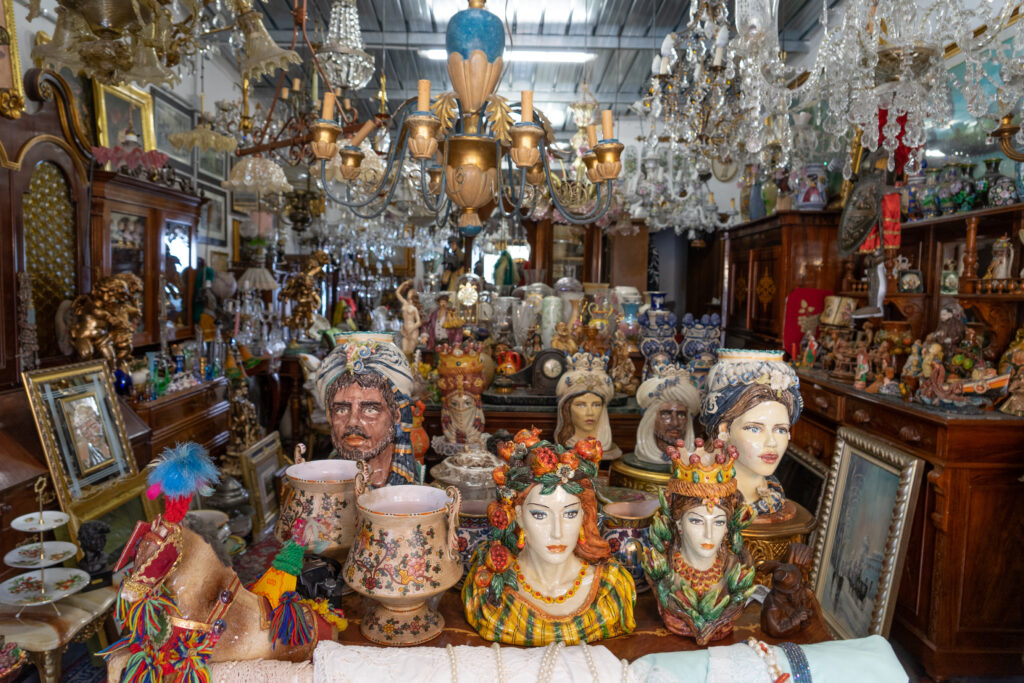
Because it is uniquely Sicilian: a story of love and heartbreak, of artistry born from legend, of identity expressed in clay, color, crown, and vase. Seeing Moor’s Heads, hearing their story, bringing one home, it’s not just a souvenir; it’s a connection.
If you cherish art, feel tradition, respect emotion, Testa di Moro are among Sicily’s most enduring symbols. Book your villa with Sicily4u, and let us help you experience Sicilian culture in its most vivid, beautiful, timeless way.


